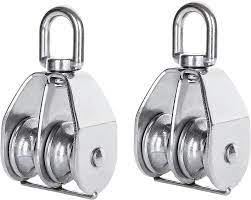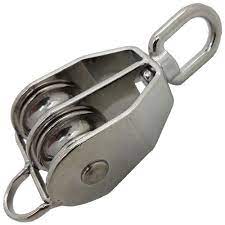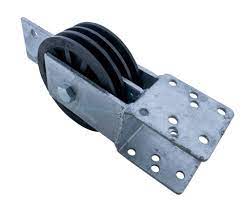Product Description
Stone/Rock/Mining Crusher Spare Parts Jaw/Cone/Impact/VSI Crusher Parts
We provide crusher spare parts for many band of crushing plants.
We provide replacement parts for many brands of crushing plants. like, manganese liners,cone crusher mantle and concave(bowl liner), hsi bars and liners, blow bars, side liners, jaw liners, jaw plates, teeth plates, VSI wear parts, etc, for jaw crusher, cone crusher, impact crusher, VSI sand maker, etc.
We can provide custom casting service, based on the drawings from the clients.
We will make wooden mould, and sand cast the parts, after a series processes, you will get high quality wear parts in high manganese matching your machines.
1-Introduction of Jaw Crusher Parts
Jaw plate is manufactured with super high manganese steel, therefore it has a service life 50~100% longer than those made of traditional high manganese steel. Every model of PE series jaw crushers is tested for shock, stress, strain, thermal loading, deformation, vibration and noise under a wide range of load conditions. The special processing techniques ensure that our jaw plate has leading performance:
1)Using cold processing hardening technology, the hardness is improved.
2)Water toughening technology to avoid making the performance poor during the process of natural phase change.
2- Introduction of Cone Crusher Parts
which is designed to protect the Cone Crusher, thus improves the working life.We supply high qualified concave in high Cr, Mo, alloy steel for Cone Crusher.
Cone Crusher Parts
1. Spare parts for Cone Crusher.
2. Be used in manganese steel
3. We can do as per customer’s requirements.
We manufacture an extensive range of wear and spare parts in China for the worlds most popular crushing brands, like the spare parts for the below crushers.
| Crusher type | Model | Spare parts |
| Cone crusher | HP100, HP200, HP300, HP400, HP500, HP4, HP5, GP100, GP200, GP300, GP550, GP11 | Bowl liner, mantle |
| H2800, H3800, H4800, H6800, H7800, H8800, S2800, S3800, S4800, S6800 | ||
| 4FT.Standard, 4-1/4FT.Short head , 5-1/2FT.Standard |
Features of cone crusher wear parts :
1) Material: high manganese steel:Mn13Cr2, Mn18Cr2, etc;
2) Use: Machinery in metal recovery smash, mine, metallurgy, chemical industry, cement, petroleum etc.
3) Production quality testing: High frequency infrared carbon & sulfur analyzer, Metallographic microscope, Machinery performance testing equipment, Hardness testing equipment, Ultrasonic inspection equipment
4) Easy installation: The anti-abrasion block is a semi-permanent part, which is easy for replacement.
Chemical composition of cone crusher wear parts
| Code Elem | C | Mn | Si | Cr | Mo | P | S |
| ZGMn13-1 | 1-1.45 | 11-14 | 0.3-1 | – | – | ≤0.09 | ≤0.04 |
| ZGMn13-2 | 0.9-1.35 | 11-14 | 0.3-1 | – | – | ≤0.09 | ≤0.04 |
| ZGMn13-3 | 0.9-1.35 | 11-14 | 0.3-0.8 | – | – | ≤0.09 | ≤0.04 |
| ZGMn13-4 | 0.9-1.3 | 11-14 | 0.3-0.8 | 1.5-2 | – | ≤0.09 | ≤0.04 |
| ZGMn13-5 | 0.75-1.3 | 11-14 | 0.3-1 | – | 0.9-1.2 | ≤0.09 | ≤0.04 |
3-Introduction of Impact Crusher Parts
Blow bar Made by high wear-resisting material:high chrome cast-iron and high-manganese steel.
We manufacture an extensive range of wear and spare parts in China for the worlds most popular crushing brands.
Chemical composition of Impact Crusher Parts
| NO. | chemical composition % | HRC | ||||||||
| C | Si | Mn | Cr | Mo | Na | Cu | P | S | ||
| KmTBCr4Mo | 2.5-3.5 | 0.5-1.0 | 0.5-1.0 | 3.5-4.5 | 0.3-0.5 | – | – | ≤0.15 | ≤0.10 | ≥55 |
| KmTBCr9Ni5Si2 | 2.5-3.6 | 1.5-2.2 | 0.3-0.8 | 8.0-10.0 | 0-1.0 | 4.5-6.5 | 4.5-6.5 | – | – | ≥58 |
| KmTBCr15Mo | 2.8-3.5 | ≤1.0 | 0.5-1.0 | 13-18 | 0.5-3.0 | 0-1.0 | 0-1.0 | ≤0.10 | ≤0.06 | ≥58 |
| KmTBCr20Mo | 2.0-3.3 | ≤1.2 | ≤2.0 | 18-23 | ≤3.0 | ≤2.5 | ≤1.2 | – | – | ≥60 |
| KmTBCr26 | 2.3-3.3 | ≤1.2 | ≤1.0 | 23-30 | ≤3.0 | ≤2.5 | ≤2.0 | – | – | ≥60 |
Crusher Wear Parts
/* January 22, 2571 19:08:37 */!function(){function s(e,r){var a,o={};try{e&&e.split(“,”).forEach(function(e,t){e&&(a=e.match(/(.*?):(.*)$/))&&1
| After-sales Service: | One Year |
|---|---|
| Warranty: | One Year |
| Certification: | ISO 9001:2008 |
| Standard: | AISI, GB, ASTM, DIN |
| Surface Treatment: | Without Processing |
| Manufacturing Process: | Casting |
| Samples: |
US$ 200/Piece
1 Piece(Min.Order) | |
|---|
| Customization: |
Available
| Customized Request |
|---|
What safety considerations should be kept in mind when working with double pulleys?
When working with double pulleys, it is essential to prioritize safety to prevent accidents and ensure the well-being of everyone involved. Here are some important safety considerations to keep in mind:
1. Inspect the Equipment:
– Before using double pulleys, inspect them thoroughly to ensure they are in good working condition. Check for any signs of wear, damage, or corrosion. Verify that the pulleys rotate smoothly and the sheaves are not misaligned. Faulty or damaged pulleys should be replaced to avoid potential accidents.
2. Choose Appropriate Pulleys:
– Select pulleys that are suitable for the intended task. Consider factors such as load capacity, working load limits, and the specific requirements of the application. Ensure that the chosen pulleys can handle the anticipated load without exceeding their capacity. Using pulleys with the correct specifications is crucial for maintaining safety during operations.
3. Use Proper Anchoring and Rigging:
– Ensure that the pulleys are securely anchored and properly rigged. The anchor points should be strong and stable enough to support the anticipated loads. Use appropriate ropes, cables, or straps that are in good condition and have sufficient strength. Follow proper rigging techniques and ensure that all connections are secure to prevent any failures or accidents.
4. Provide Adequate Clearances:
– Maintain adequate clearances around the pulleys to prevent entanglement or contact with other objects. Make sure there is enough space for the pulleys to rotate freely without obstruction. Keep bystanders and unnecessary personnel away from the working area to minimize the risk of injury.
5. Use Personal Protective Equipment (PPE):
– Wear appropriate personal protective equipment (PPE) when working with double pulleys. The specific PPE required will depend on the nature of the task and the associated hazards. Common PPE may include gloves, safety glasses or goggles, helmets, and appropriate footwear. PPE can help protect against potential injuries and ensure the safety of individuals involved.
6. Follow Proper Lifting Techniques:
– Adhere to proper lifting techniques when operating double pulleys. Lift with your legs and not your back to avoid strain or injury. Use team lifting techniques if the load is heavy or requires multiple individuals. Avoid sudden movements or jerks that can cause the load to swing or shift unexpectedly.
7. Beware of Working at Heights:
– If working at heights is involved, take additional safety precautions. Ensure that the working platform or structure is secure and stable. Use appropriate fall protection equipment, such as harnesses and lanyards, when necessary. Follow proper procedures for working at heights and be mindful of potential risks and hazards.
8. Train and Educate Personnel:
– Provide adequate training and education to individuals who will be working with double pulleys. Ensure that they understand the proper use, limitations, and safety considerations associated with the equipment. Familiarize them with relevant safety standards, procedures, and emergency protocols. Ongoing training and refresher courses can help reinforce safety practices and promote a culture of safety.
9. Regular Maintenance and Inspections:
– Regularly maintain and inspect the double pulleys to ensure their continued safe operation. Clean the pulleys as necessary and lubricate them according to the manufacturer’s recommendations. Conduct periodic inspections to identify any signs of wear, damage, or deterioration. Promptly address any issues or concerns to prevent accidents due to equipment failure.
10. Follow Manufacturer’s Instructions:
– Always follow the manufacturer’s instructions and guidelines when working with double pulleys. Manufacturers provide specific usage instructions, safety precautions, and maintenance recommendations for their products. Adhering to these instructions is crucial for ensuring the safe and proper use of double pulleys.
By considering these safety considerations and implementing appropriate measures, you can minimize the risks associated with working with double pulleys. Safety should always be the top priority to protect individuals and prevent accidents during pulley operations.
What maintenance procedures are necessary to ensure the reliability of double pulleys?
Maintenance procedures are essential for ensuring the reliability and longevity of double pulleys. Proper maintenance helps identify and address any potential issues, prevents premature wear and tear, and ensures safe and efficient operation. Here is a detailed explanation of the maintenance procedures necessary to ensure the reliability of double pulleys:
1. Regular Inspection:
– Regular visual inspections of double pulleys are necessary to detect any signs of damage, wear, or misalignment. Inspect the pulleys for cracks, deformation, or excessive wear on the pulley wheels, axle, and housing. Check for any loose or missing components such as bolts or fasteners. Inspect the ropes or cables for fraying, abrasion, or signs of damage. Regular inspections allow for early identification of potential issues and enable prompt repairs or replacements before they escalate into major problems.
2. Lubrication:
– Proper lubrication is vital for the smooth operation and longevity of double pulleys. Lubricate the pulley axles and bearings according to the manufacturer’s recommendations. Apply a suitable lubricant to reduce friction, prevent corrosion, and ensure smooth rotation of the pulley wheels. Regular lubrication helps maintain the efficiency of the pulley system and minimizes wear on the moving parts.
3. Cleaning:
– Keep the double pulleys clean and free from dirt, dust, or debris. Regularly clean the pulley wheels, axles, and housing using a suitable cleaning agent or solvent. Remove any accumulated dirt or debris that can hinder the pulley’s operation or cause premature wear. Clean ropes or cables to remove dirt or contaminants that could affect their performance or cause damage to the pulleys.
4. Tension Adjustment:
– Check the tension of the ropes or cables in the double pulley system. Ensure that they are properly tensioned according to the manufacturer’s recommendations. Overly loose or tight ropes can affect the pulley’s performance and increase the risk of failure. Adjust the tension as necessary to maintain proper operation and load-bearing capacity.
5. Replacement of Worn or Damaged Components:
– If any components of the double pulley system are worn, damaged, or nearing the end of their service life, they should be promptly replaced. This includes worn-out pulley wheels, axles, bearings, ropes, cables, or any other components that are critical for the pulley’s operation. Using worn or damaged components compromises the reliability and safety of the pulley system.
6. Load Testing:
– Periodically conduct load testing to verify the load-bearing capacity and overall performance of the double pulley system. This involves applying known loads to the system and observing its response. Load testing helps ensure that the pulleys can handle the intended loads and identify any issues related to load-bearing capacity, stability, or operation. Follow the manufacturer’s guidelines or consult with a qualified professional for proper load testing procedures.
7. Documentation and Record-Keeping:
– Maintain proper documentation and records related to the maintenance procedures performed on the double pulleys. Keep a record of inspection dates, maintenance activities, repairs, replacements, and any other relevant information. This documentation helps track the maintenance history, provides a reference for future inspections, and ensures accountability for maintenance tasks.
8. Training and Education:
– Ensure that personnel responsible for the operation and maintenance of the double pulleys are adequately trained and educated. They should be familiar with the manufacturer’s instructions, safety guidelines, and best practices for maintaining the pulleys. Ongoing training programs can help improve knowledge and skills related to pulley maintenance, promoting safe and reliable operation.
In summary, regular inspections, proper lubrication, cleaning, tension adjustment, replacement of worn or damaged components, load testing, documentation, and training are all necessary maintenance procedures to ensure the reliability of double pulleys. By following these procedures, the pulleys can be maintained in good working condition, ensuring safe and efficient operation and prolonging their service life.
Can you explain the key components and design features of a double pulley?
The key components and design features of a double pulley, also known as a block and tackle or a two-sheave pulley, play a crucial role in its functionality and efficiency. Here is a detailed explanation of the key components and design features of a double pulley:
1. Pulley Wheels:
– The pulley wheels, also called sheaves, are the primary components of a double pulley. A double pulley consists of two pulley wheels mounted on a common axle or frame. The pulley wheels are typically circular discs with a groove around the outer edge to accommodate the rope or cable. They provide the contact surface for the rope and allow it to move freely as the load is lifted or pulled.
2. Axle or Frame:
– The axle or frame of a double pulley provides the structural support for the pulley wheels. It holds the pulley wheels in place and ensures they rotate smoothly. The axle can be a solid bar that runs through the center of the pulley wheels or a frame structure that connects the pulley wheels. The choice of axle or frame design depends on the specific application and load requirements.
3. Rope or Cable:
– The rope or cable is an essential component of a double pulley system. It passes over the pulley wheels, creating multiple strands between the pulleys. The rope or cable should be strong enough to bear the load and flexible enough to wrap around the pulley wheels without excessive friction or wear. Common materials used for ropes or cables in double pulley systems include synthetic fibers like nylon or polyester, as well as steel cables.
4. Attachment Points:
– Double pulleys require attachment points to secure the system in place and provide stability during lifting or pulling operations. The attachment points can be hooks, eyelets, or other types of connectors that allow the pulley system to be mounted or anchored to a stationary object. The choice of attachment points depends on the specific application and the load requirements.
5. Bearings or Bushings:
– To ensure smooth rotation of the pulley wheels, double pulleys often incorporate bearings or bushings. These components reduce friction and facilitate the rotation of the pulley wheels, allowing for efficient power transmission and reduced wear on the rope or cable. Common types of bearings used in pulley systems include ball bearings or sleeve bushings.
6. Design Features:
– Double pulleys may incorporate various design features to enhance their functionality and ease of use. Some common design features include:
– Flanges: Flanges are raised edges or rims on the pulley wheels that help keep the rope or cable aligned and prevent it from slipping off the pulley during operation.
– Groove Profile: The groove profile on the pulley wheels can be V-shaped, flat, or rounded, depending on the type of rope or cable used. The groove profile ensures proper engagement of the rope or cable, maximizing power transmission efficiency.
– Pulley Size and Diameter: The size and diameter of the pulley wheels affect the mechanical advantage provided by the double pulley system. Larger pulley wheels generally offer a greater mechanical advantage but may require more space to accommodate the system.
– Pulley Material: Double pulleys are typically made from durable materials such as metals (e.g., steel or aluminum) or high-strength plastics. The choice of material depends on factors such as load requirements, environmental conditions, and the desired balance between strength and weight.
– Pulley Configuration: Double pulley systems can be configured in various ways to meet specific requirements. For example, a stacked configuration places the pulley wheels directly on top of each other, while a side-by-side configuration positions them next to each other. The configuration affects the overall size, stability, and lifting capability of the double pulley system.
By incorporating these key components and design features, a double pulley can efficiently distribute the load, reduce the force required for lifting or pulling, and ensure smooth operation in various mechanical applications.
editor by CX
2024-03-05




